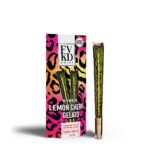
Professional Vector Artwork Conversion Services for Printing & Embroidery
If you’re in the world of printing, apparel design, or embroidery, you already know how important Vector Artwork Conversion is for achieving sharp, clean, and professional-quality results. Whether you’re working with logos, illustrations, product labels, or custom designs, vector files are essential for ensuring that your artwork stays crisp and scalable no matter the size or printing method. From screen printing to embroidery digitizing, vector artwork is the backbone of modern design production.
In this detailed guide, we’ll break down everything you need to know about vector artwork conversion, why it matters, and how professional services can completely transform the quality and consistency of your output.
What Is Vector Artwork Conversion?
Vector artwork conversion is the process of transforming raster images like JPG, PNG, GIF, or PDF into fully scalable vector formats such as AI, EPS, SVG, CDR, and PDF-X. Unlike raster images, which are made of thousands of tiny pixels, vector art is built using mathematical paths, curves, points, and shapes. This means:
- It never becomes blurry
- It can scale infinitely
- Colors and lines remain perfectly crisp
- It’s easy to edit, modify, or resize
- It’s fully production-ready for printing or embroidery
If you have ever enlarged a JPG logo and saw fuzzy edges or pixelation, the issue was simply that the artwork wasn’t vectorized.
Why Vector Artwork Is a Must for Modern Production
Whether you’re a print shop owner, embroidery business, apparel brand, or freelance designer, vector artwork is non-negotiable. Here’s why:
1. Infinite Scalability Without Losing Quality
Raster images lose clarity when enlarged, but vector art remains clean and sharp—even if you scale it from 2 inches to 20 feet. This is crucial for:
- Banners
- Posters
- Vehicle wraps
- Storefront signage
- Large-format DTG and screen printing
Your output stays professional every time.
2. Essential for Embroidery Digitizing
Embroidery machines rely on clean lines, sharp edges, and simple, accurate shapes to create smooth stitches. Vectors help digitizers:
- Trace shapes accurately
- Create clean satin borders
- Match fill areas with precision
- Adjust artwork for small text
- Avoid distorted stitches
If your design isn’t vector-ready, your embroidery quality will suffer.
3. Required for Screen Printing, Vinyl Cutting & Laser Engraving
Vector artwork is mandatory for:
- Screen printing color separations
- Vinyl cutting machines
- Laser engraving machines
- Plotter cutting
- Sublimation templates
- Heat transfer vinyl (HTV)
These machines follow paths and outlines—not pixelated edges.
4. Perfect for Branding & Marketing Materials
Logos, promotional items, business cards, and product labels all require crisp vector formats. With vectors, your brand identity stays consistent across all applications—from tiny print sizes to oversized banners.
Raster vs. Vector: What’s the Difference?
Here’s a quick breakdown of what sets them apart:
Raster Images (JPG, PNG, GIF)
- Pixel-based
- Lose quality when zoomed in
- Not scalable
- Often blurry when printed large
- Hard to edit
Vector Images (AI, EPS, SVG, PDF, CDR)
- Made of scalable paths
- Infinitely adjustable
- Always sharp
- Easy to recolor or modify
- Ideal for printing and embroidery
This is why printers and embroiderers always ask clients:
“Do you have a vector version of your logo?”
Where Vector Artwork Conversion Is Needed
Vector files are used across nearly every type of design and production industry. Here’s where they matter most:
1. Screen Printing
Vector art ensures precise color separations, crisp outlines, and clean prints.
2. Embroidery Digitizing
Smooth lines and simplified shapes make the embroidery process easier and improve stitch quality.
3. DTG & DTF Printing
Even though DTG uses raster printing, vector files ensure clarity and easy resizing.
4. Laser Cutting & Engraving
Laser machines follow vector paths for precise cuts—raster images simply won’t work.
5. Vinyl Cutting (HTV or Adhesive Vinyl)
Plotters need vector outlines to cut accurately.
6. Promotional & Corporate Branding
Mugs, pens, USBs, notebooks, bags—all need vector artwork for consistent results.
7. Sign Making & Large-Format Prints
Large-scale prints require crisp, clean edges that only vectors can provide.
How Professional Vector Artwork Conversion Works
Vectorizing artwork is far more than clicking “auto trace” in software. True professionals follow a detailed process:
1. Manual Redrawing
Designers use tools like the Pen Tool to recreate shapes, curves, and outlines with total accuracy.
2. Smoothing Out Lines & Shapes
Pixelated borders are cleaned, refined, and optimized to create natural, flowing paths.
3. Color Matching
Professionals match original design colors using:
- Pantone
- CMYK
- RGB
- Brand color guides
This ensures brand consistency across all products.
4. Simplification of Complex Artwork
Shadows, gradients, tiny details, and patterns are adjusted to be print-friendly or embroidery-friendly.
5. Layer Organization
For screen printing and DTG, proper layer separation is critical.
For embroidery, layers help digitizers identify fill areas and borders.
6. Exporting in Multiple Formats
Professionals provide the final artwork in various vector formats, such as:
- AI
- EPS
- SVG
- PDF
CDR
This ensures compatibility with all machines and software.
Vector Artwork Conversion for Embroidery: What Changes?
Embroidery requires a simplified, clean version of the artwork. Small details that work in print may not translate well into stitches.
The vector version needs:
- Bold outlines
- Clean edges
- Reduced tiny details
- No unnecessary shading
- Clear separation of shapes
This helps the digitizer create smooth satin stitches, consistent fills, and sharp lettering.
Vector Artwork Conversion for Printing: What Makes It Different?
Vector artwork for printing focuses more on clarity, scalability, and color separation.
For screen printing, the vector must allow:
- Exact color layers
- Easy halftone setup
- Sharp registration marks
For DTG and sublimation:
- Colors must be optimized
- Lines should be crisp
- Artwork must be fully scalable
Common Problems That Professional Vector Conversion Solves
If you’re using non-vector images, you may notice:
- Blurry or pixelated prints
- Jagged edges
- Incorrect colors
- Misalignment during embroidery
- Poor screen print color registration
- Difficult editing
- Loss of detail on large prints
Vector artwork eliminates all of these problems instantly.
Tips for Better Vector Artwork Conversion
To get the best results:
- Provide the best resolution of your image
- Avoid screenshots when possible
- Share color preferences (Pantone or CMYK)
- Explain where the artwork will be used (print, embroidery, signage, etc.)
- Mention any required file formats
A little extra info helps the designer create artwork that matches your exact needs.
Why Choose Professional Vector Artwork Services Instead of Auto-Trace Tools?
Auto-trace can be helpful for simple shapes, but it will never produce perfect results for:
- Logos with gradients
- Small text
- Complex artwork
- Hand-drawn illustrations
- Badly pixelated images
Professional designers offer:
- Clean, accurate paths
- Proper color separation
- Balanced shapes and curves
- Editable, high-quality output
- Files ready for any production method
This saves time, money, and frustration.
Final Thoughts
Vector artwork conversion is the backbone of high-quality printing, embroidery, engraving, and branding. It ensures your designs stay crisp, scalable, and production-ready no matter the size or medium. Whether you need logos, illustrations, product labels, or promotional artwork prepared for professional use, investing in proper vectorization guarantees flawless results and smoother production.
For businesses seeking high-quality, precise, and reliable artwork conversion, Absolute Digitizer provides expert services to ensure your designs look their best across all printing and embroidery platforms.




